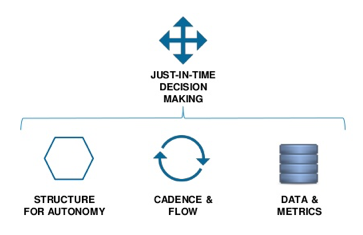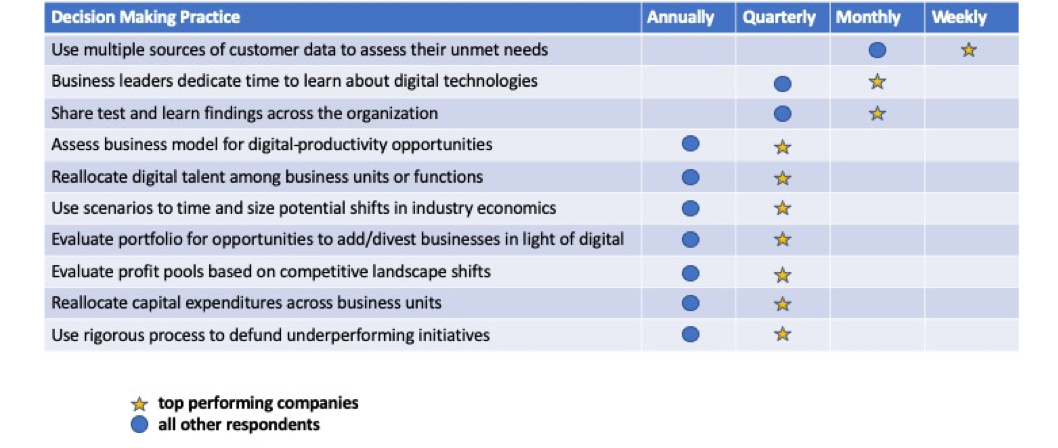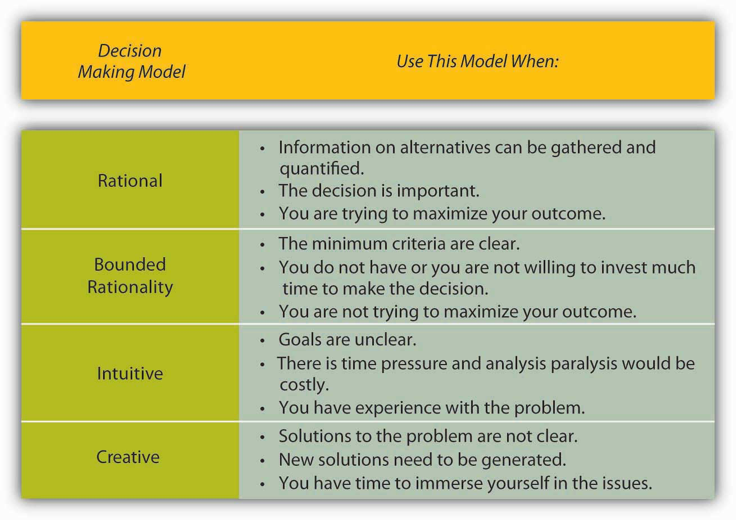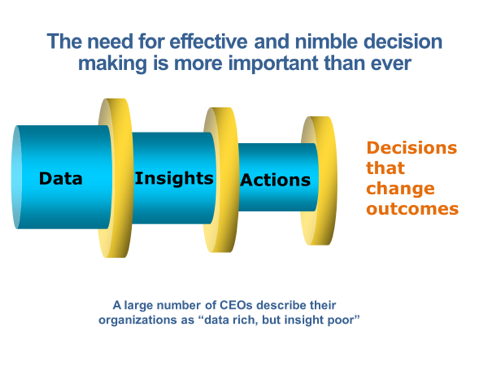
August 27, 2019
In the digital world,
you have to change the decision-making cadence of your business

The frequency and pace of change from digital disruption necessitates that companies can no longer rely on traditional planning and decision-making models. Simply put, they are too slow, too rigid and too process driven to adapt to the new speed of business.
- A recent research study by Bain & Company found that decision making effectiveness drives 95 % of business performance
- The UK Institute for Employment found that decision making practices impact 50% of employee engagement
Early adopters of digital transformation initiatives have embraced a just-in-time decision making cadence as the new competitive imperative. It allows them to adapt, adjust and when necessary pivot in real time.
Part of this change involves moving from a traditional hierarchical vertically structured operating model to a cross functional, cross business horizontally structured operating model. The new customer revenue value chain is cross industry, cross category, cross channel, cross device and cross brand which is completely changing how companies make money. Companies must now align how they make decisions with the new way their customers make decisions.






